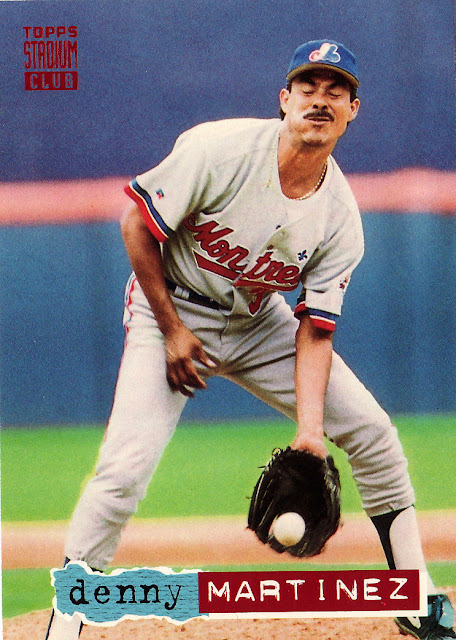Classic card of the week
This is how a baseball card gets made:
Step 5: Okay, you’ve got the perfect picture. Now it’s time to mix actual information and your imagination to make this baby sing. That’s why you got into this field in this first place, isn’t it? YOU ARE A CHAMPION DON’T FORGET THAT. Here’s an idea, for example: Present the player’s first name like it was ripped out of a magazine. Make the last name like it’s an old school computer label. It’ll be like if a serial killer made a card of a baseball player looking weird and silly! You can have that idea, for free. Actually … just send me like, five bucks. Three dollars. Three bucks would be fine.
Step 7: Include industry standard “Topps Skills Rating System” data. How well did he hold runners on base on a scale of 1-to-0, 10 being “held every runner on base ever” and 1 being “held no runners or base never.” Take a guess, if you don’t know. Maybe just say “5.” That sounds right. What about his stamina, out of 10? Lot of stamina, or is he one of those pitchers who’s always losing his breath on the mound from pitching? Use your judgment. Utilize decimals, as people will assume you know what you’re talking about. “Oh Denny Martinez has 8.1 stamina but Bob Welch only has 7.8 stamina? That is interesting and relevant and useful! The person who created this card must really know a lot about baseball and also physical stamina!” That is what people will say.
Step 1: Go to a baseball game or something and take a
picture of a baseball player playing baseball OR not playing baseball
Step 2: If you don’t have a camera, just draw a picture. You
don’t need to go to an actual baseball game to do this; you can rely on your
memory of a previous game OR just make up what you think the player should look
like. NOTE: We will not be addressing portraits today.
Step 3: Take the picture back to your studio or lab.
NOTE: This requires a studio or lab, or studiolab, which is the awesomest one.
Examine them carefully with an absurdly giant magnifying glass or just use your
eyes.
Step 4: Ask yourself questions like, “Is this picture
awesome?” “Does this do justice to the player featured?” “Will he be happy and
satisfied and proud to show his grandchildren this baseball card?” (NOTE:
Although it is not your job to cater to the whims and egos of the featured
players, they ARE your proverbial bread and butter, so buttering their
proverbial buns is par for the course ((golf analogy))) More questions: “Are his eyes open or closed, and if closed, is he also in an awkward position because he was kind of maybe a little scared the ball was going to nail him in the testicles?” “Did he actually catch the
ball by accident regardless of everything mentioned in the previous question?”*
*If you answered “yes” to the last two questions, stop
everything you’re doing and sit down. You are about to create the greatest
baseball card ever, provided you follow the remaining plan accordingly.
Denny Martinez, 1994 Topps Stadium Club
Step 5: Okay, you’ve got the perfect picture. Now it’s time to mix actual information and your imagination to make this baby sing. That’s why you got into this field in this first place, isn’t it? YOU ARE A CHAMPION DON’T FORGET THAT. Here’s an idea, for example: Present the player’s first name like it was ripped out of a magazine. Make the last name like it’s an old school computer label. It’ll be like if a serial killer made a card of a baseball player looking weird and silly! You can have that idea, for free. Actually … just send me like, five bucks. Three dollars. Three bucks would be fine.
Step 6: Throw some stats on there. Like, what was his
allowed batting average with runners in scoring position in 1993, and where did
that rank among major league pitchers? That’s the crap kids these days want to
know about. Kids these days are freakin’ nerds, with their baseball cards and weird
stats and what not. GET OUT THERE AND PLAY, AMIRIGHT? Neither here nor there.
Anyway, get some more stats. And some words. Throw ‘em all over the place. Make a chart or some
shizz. Oh, use your computer for everything I am saying, or ask one of your
computer nerd friends or an aforementioned nerd child.
Step 7: Include industry standard “Topps Skills Rating System” data. How well did he hold runners on base on a scale of 1-to-0, 10 being “held every runner on base ever” and 1 being “held no runners or base never.” Take a guess, if you don’t know. Maybe just say “5.” That sounds right. What about his stamina, out of 10? Lot of stamina, or is he one of those pitchers who’s always losing his breath on the mound from pitching? Use your judgment. Utilize decimals, as people will assume you know what you’re talking about. “Oh Denny Martinez has 8.1 stamina but Bob Welch only has 7.8 stamina? That is interesting and relevant and useful! The person who created this card must really know a lot about baseball and also physical stamina!” That is what people will say.
Step 8 (final step): Pop the champagne, your card is
complete! Hand it to whomever at your company is responsible for putting it in
the pack—PACK NERD—and celebrate another job well done!


Comments